Ecology (honors bio)
1/67
Earn XP
Description and Tags
Units 1 & 2
Name | Mastery | Learn | Test | Matching | Spaced |
|---|
No study sessions yet.
68 Terms
Population density
a measurement of the number of individuals living in a defined space.
# of individuals / area (units²) = population density
Population dispersion
the wayin which individuals of a population are distributed or spread out, in an area. Three types.
Clumped dispersion
Individuals live close together in groups. This might help for mating, protection, or to use food resources.
Ex. Many fish species swim together in large groups to avoid predators.
Uniform dispersion
Individuals live at specific distances from one another. This may be because of competition for limited resources.
Ex. Many bird species are territorial, each protecting its own space.
Random dispersion
individuals are spread randomly in an area.
Ex. Three-toad sloths have almost no competitors and few predators.
Survivorship curve
a diagram that shows the number of organisms that survive over time, starting from birth. Three basic patterns of survivorship curves.
Type I (K strategist)
This curve is typical of humans and other large mammals. There are few deaths of infant organisms and most will survive to old age. These organisms tend to have parents that care for their young.
Type II
This curve is typical of birds, small mammals, and some reptiles. At all points of life, these organisms have equal chance of living or dying, either from disease or predation.
Type III (R statagist)
This curve is typical of invertebrates, fish, amphibians, and plants. These organisms have large numbers of offspring, or produce many eggs or seeds. Many of the offspring will die from predation, but a few will survive to adulthood.
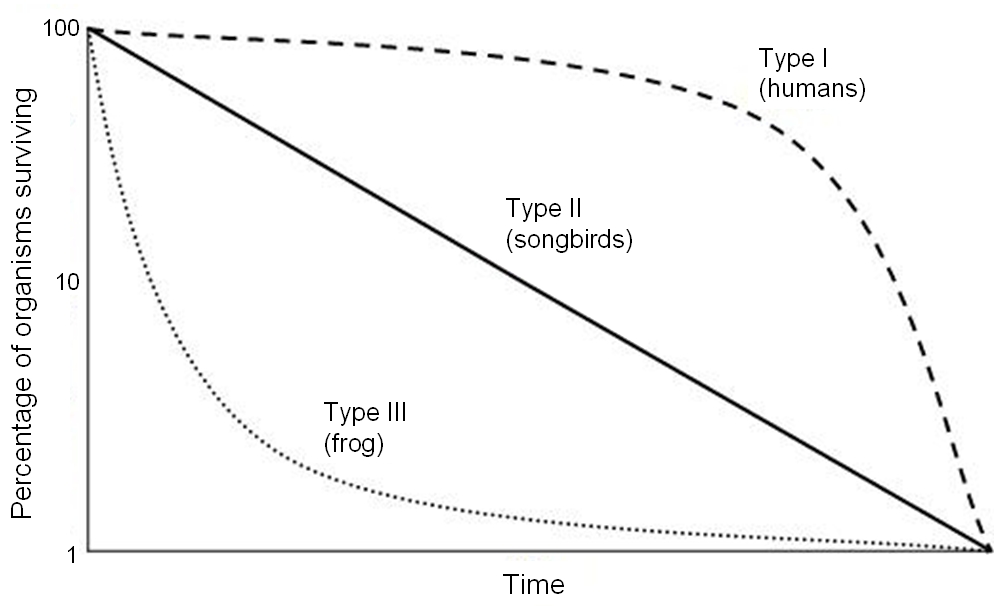
What four factors can affect the size of a population?
Immigration (+), birth (+), emigration (-), death (-)
What does population growth depend on?
Depends on the resources available.
Exponential growth (j curve)
Occurs when a population size increases greatly over a period of time. This type of population growth occurs when there are plenty of resources available.
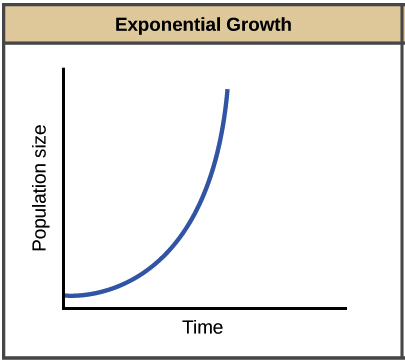
Logistic growth (s curve)
Begins with a period of slow growth, followed by exponential growth. As the population grows, resources become more and more limited. The population eventually levels off at a size the environment can support.

Immigration
the movement of individuals into a population from another population
Emigration
the movement of individuals out of a population and into another population
Carrying capacity
the maximum number of individuals of a particular species that the environment can support. if the environment changes, the carrying capacity can change, too.
Population crash
a large decrease in the size of a population over a short time period
Ex. A disease might destroy a population’s main food source causing a decrease in the carrying capacity in turn causing a population crash.
Limiting factor
the factor that has the greatest effect on limiting population growth
Density-dependent limiting factors
limiting factors that are affected by the population density, or the number of individuals living in a given area.
Give three examples of density-dependent limiting factors and explain them.
Competition: the more dense the population is, the greater the competition among individuals is for resources such as food.
Predation: the density of the prey population affects the number of predators that can survive. If there is an increase in the number of prey, then the area can support more predators. The opposite if there is a decrease in prey.
Parasitism and disease: parasites and disease spread more quickly through dense, or crowded, populations. This can result in a decrease in the population size.
Density-independent limiting factors
Limiting factors that affect the size of any population, no matter what density of individuals live in an area.
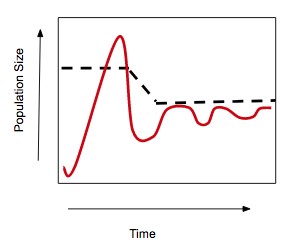
Give three examples of density-independent limiting factors and explain them.
Unusual weather: weather can affect the size of a population regardless of its density
Natural disasters: volcanoes, hurricanes, and other natural disasters can wipe out populations regardless of density
Human activities: destruction of habitat, pollution, and introduction of nonnative species are all human activities that affect population size regardless of density.
Biotic potential
the maximum rate a population can grow given optimal conditions, no limiting factors
pioneer species
first organism to colonize a new site
developed soil by braking down rock and adds organic material to the soil
(ex. lichen)
succession
a series of changes in a community which new populations of organisms gradually replace existing ones
repairing ecosystem
2 types
Primary succession
colonization of new sites by communities of organisms, takes place on bare rock
pioneer species developed soil
What are the two sources of bare rock?
lava and glacial movement
Secondary succession
sequence of community changes that takes place when a community is disturbed by natural disasters or human activity (ex. forest fire, deforestation)
takes place on existing soil (no need for pioneer species)
climax community
a stable, mature community that undergoes little to no succession
final community in an ecosystem
keystone species
a species that has an unusually large effect on its ecosystem (ex. starfish, otters)
trophic cascade
the removal of addition of a top predator causes a chain reaction that affects multiple lower trophic levels in the ecosystem.
habitat
environment organism lives in
niche
job or role organism has in its environment
competition
two organisms fight for the same resources
interspecific competition
between two different species (ex. different species of birds fighting for a worm)
“e” every species
intraspecific competition
within the same species (ex. sheep fighting for a mate)
“a” a species
competitive exclusion
more fit species will drive away less fit species
resource partitioning
similar species share the same resources to avoid competition
predation
one organism hurts and kills the other
symbiosis
two organisms live together in close association
parisitism
one organism benefits (parasite) at the expense of the other (host)
ectoparasite
parasite that lives on the outside (ex. tick)
endoparisite
parasites that live inside the host (ex. heartworm)
commencalism
one organism benefits, while the other is neither helped or harmed
mutualism
both organisms benifit
ecology
the study of organisms and their interactions with the living and nonliving parts of their environment
To be a species individuals must …
be able to produce fertile offspring and share similar characteristics
organism (individual)
a single member of a species
population
a group of individuals of the same species in the same area
community
group of populations living in the same area
ecosystem
a community and all the nonliving parts of a particular area
biome
large community of plants and animals having a specific soil and climate
biosphere
the whole world - all the living and nonliving parts
classification
arrangement of organisms into groups based on their similarities
taxonomists
scientists that identify and name organisms
what are the benefits of classification?
accurately and uniformly named species
prevents misnomers (ex. starfish and jellyfish aren’t really fish)
uses the same language (Latin or Greek)
binomial nomenclature
two word name: a. Genus, b. species
Italicize and first letter of genus is uppercased
taxon (taxa - plural)
catogory into which related organisms are placed
what are the eight taxons (least to most specific)
domain
kingdome
phylum
class
order
family
genus
species
Domains
brodest, most inclusive taxon
three: Archaea, Eubacteria, Eukarya
10% rule of energy transfer
only 10% of energy is transferred up each trophic level
biomass pyramid
a graphical representation of the total mass of living organisms at each trophic level in an ecosystem
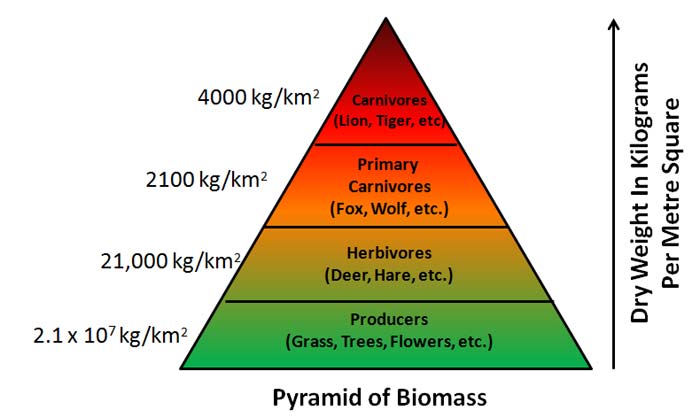
numbers pyramid
an ecological diagram that shows the number of individual organisms at each trophic level in an ecosystem
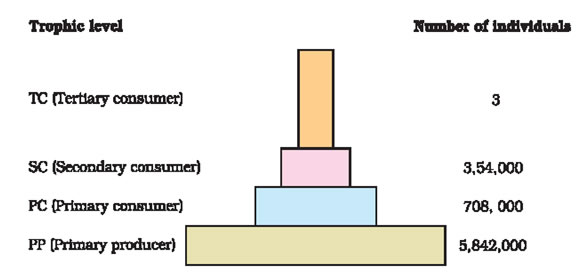
energy pyramid
a visual representation of the energy flow through an ecosystem's trophic levels, with producers at the base and decreasing energy at each higher level
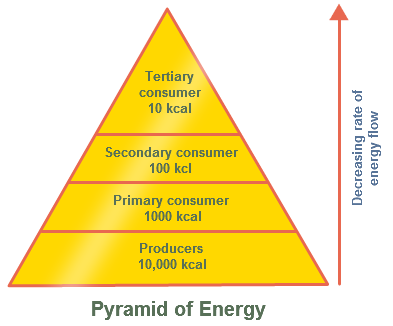
invasive species
a non-native organism that spreads aggressively and causes harm to its new environment, impacting the economy, ecosystem, and human health
Bioaccumulation/Bioamplification/Biomagnification
the process by which the concentration of a pollutant increases in organisms at successively higher levels of a food chain
generalist species
organisms that can survive and thrive in a wide variety of environmental conditions and can consume many different types of food
specialist species
species has a narrow ecological niche with specific requirements for survival, such as a limited diet, a particular habitat, or a narrow range of environmental conditions